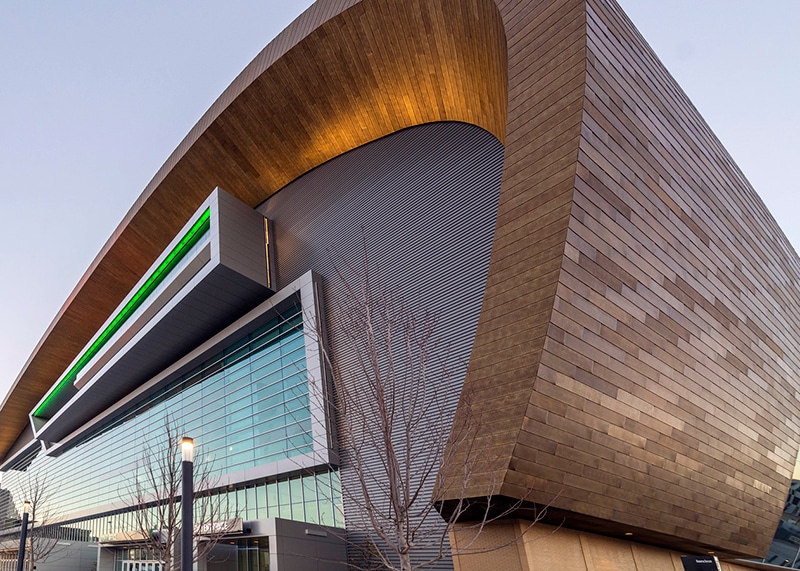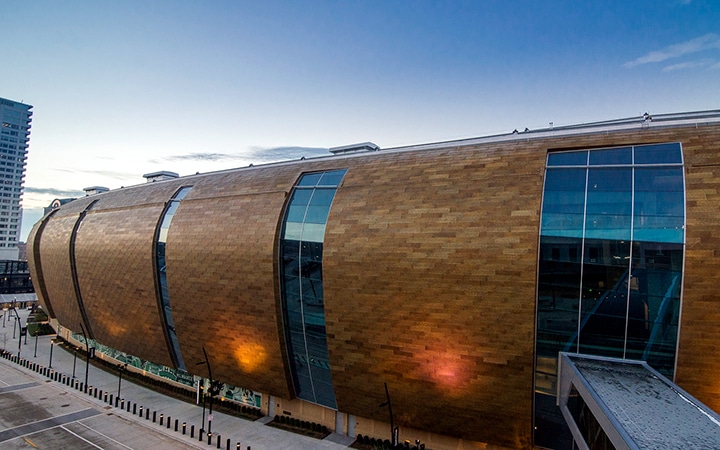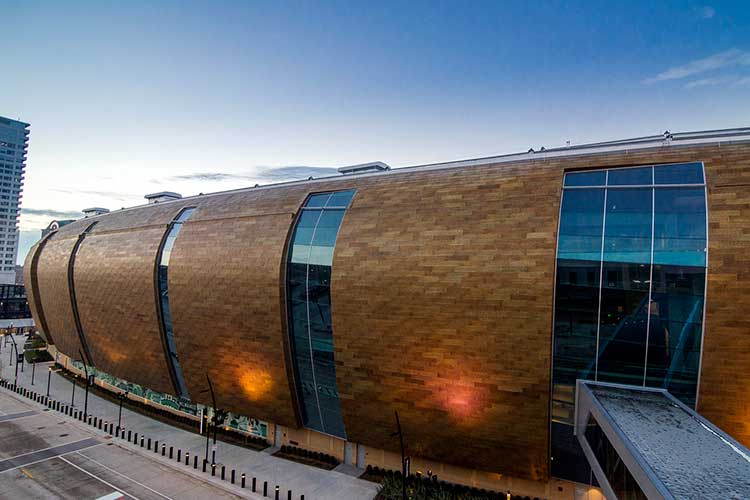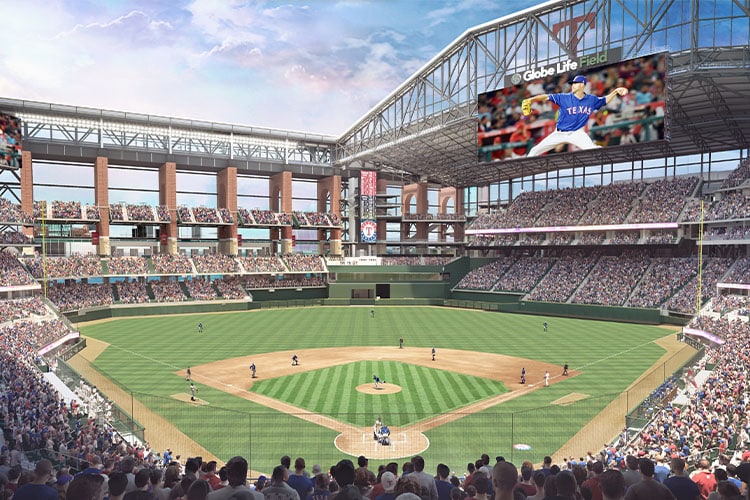When the team at Populous set out to design the world’s first bird-friendly arena for the Milwaukee Bucks, they were responding to a growing trend in environmentally friendly design. In the past, most stadiums were designed with a focus on the human experience, with shiny glass-fronted facades that are indistinguishable from the sky from a bird’s eye view, leading to deadly collisions.
“Awareness is increasing around bird flight and habitat impact,” says Heather Stewart, an architect and lead designer at Populous who worked on the project, “so bird friendliness became a priority very early in the design process.” This prioritization of the needs of our feathered friends came about, in part, due to the initiative of conservation group Bird City Wisconsin, who, Stewart says, approached Bucks leadership “with bird conservation in mind” back when the stadium’s design was first being conceptualized.

Bird deterrence
Unfortunately, stadiums have typically been avian deathtraps. In fact, according to an estimate from the Audubon Society, each year over 1 billion birds die from colliding into buildings in North America alone. This issue was especially urgent for the Bucks stadium, says Stewart, because of the position of the arena within the migratory pathway of many American birds. “Milwaukee is on Lake Michigan and directly on the migratory flyway of hundreds of bird species,” she explains, meaning that their creation of a bird-friendly design would have ripple effects on the population of wild birds across the country.
As a LEED Accredited Professional, Stewart has always placed sustainability at the heart of her design work. “The LEED rating system has incorporated a Bird Deterrence credit that Fiserv Forum sought to pursue as part of its LEED Silver Certification,” says Stewart, so when Populous began their research into creating an environmentally sustainable stadium for the Bucks, bird friendliness was a natural fit.
Fiserv Forum is actually the first sports arena to earn this credit, by incorporating bird safe-glass, which is etched with a pattern that interrupts the reflectivity of glass to alert birds to its presence, and agreeing to undertake a three-year collision monitoring effort to study its effects. “Good design should always have a positive impact on the environment,” says Stewart. “And the dialogue of creating more bird-friendly design has been something that does cross into other projects and even other project types. The conversation around bird safety is an easy one to have.”
Good for birds, good on energy
Populous started out by comparing options of facade designs according to the level of danger they faced to birds. “Each building facade was quantified relative to its Bird Collision Threat Rating (BCTR) as developed by the American Bird Conservancy,” says Stewart. “Opaque pieces of building are a smaller threat, very clear glass is a higher threat. This system clearly shows which building elements pose a greater threat to the bird population.”
Using this method, they developed a facade that uses fritted glass, which is printed with a thin ceramic mixture and fired to create an opaque coating. “Interestingly, design that is good for birds is also good for humans,” says Stewart. “The largest glass facades at Fiserv Forum were treated with a glass frit, which makes the glass more visible to birds, but also helps to humanize the scale of the building.” Fritted glass also has the added benefit of being more energy efficient than traditional glass, reducing heating and cooling costs. Another bonus for the stadium’s ecological impact.

Future bird-friendly arenas
Stewart believes that Populous’ focus on bird-friendly design will have a lasting impact on the world of sports arenas. “Fiserv Forum is a game changer,” she says. “The building demonstrates that small changes can have a very positive result. Other arenas are taking notice and I believe bird sensitive design will become an integral design consideration going forward.” Stewart herself plans to continue placing environmental awareness at the center of her design practice. “Awareness of environmental impact continues to inform designs at Populous,” she says. “It’s most interesting to see how each community’s distinct priorities shape unique designs meant for that specific place.”
In the case of the stadium, this impact is something that Stewart has witnessed firsthand. “The new arena brought more energy to downtown that the Bucks are so proud to help create,” she says. “Between a superb 2019 Bucks roster and a new arena, downtown Milwaukee is a vibrant place to take in a game. To witness that transformation has been very rewarding.”












